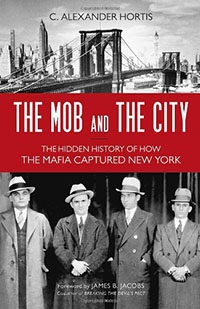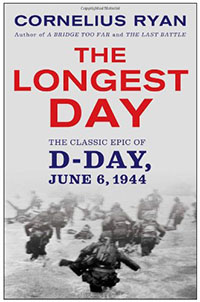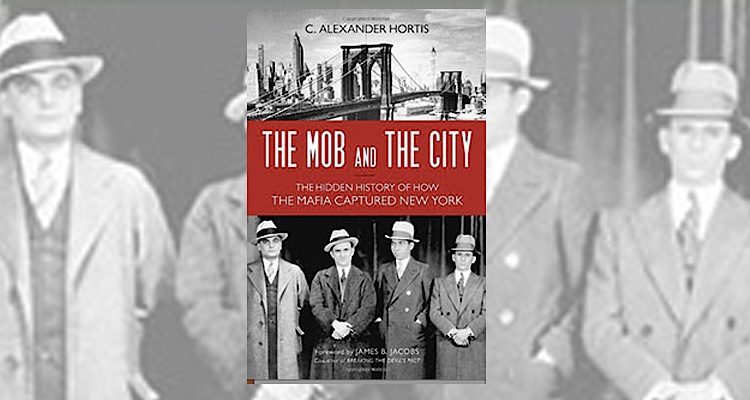 The Mob and the City: The Hidden History of How the Mafia Captured New York, by C. Alexander Hortis (Prometheus)
The Mob and the City: The Hidden History of How the Mafia Captured New York, by C. Alexander Hortis (Prometheus)
From about 1890 to 1920, European immigrants surged into New York City—Irish, Germans, Italians and Jews from various countries. Life was tough, what with everybody hustling to make a dime, and as C. Alexander Hortis explains in his insightful if discursive book, The Mob and the City, some of the early immigrants figured out how to take advantage of those who came later. Irish and Italian thugs starting working the docks; Jewish organized crime was implicated in insurance scams and was “far stronger throughout the city.” All were involved in narcotics trafficking and racketeering, better known as extortion. Local toughs bullied everybody from fruit vendors to shippers and garment makers into paying fees for “protection” or to have to have their goods loaded onto trucks. It was called the “mob tax.”
Over time Jews migrated into legitimate businesses, and many Irish immigrants wrangled city government jobs via political patronage. That left the Italians, and more specifically Sicilian immigrants, to run the syndicates. Thus arose the New York City Mafia, or the Cosa Nostra (meaning “our thing”), the strongest criminal organization in the first half of the 20th century. While Mafia “godfathers” have been romanticized by film and television, Hortis claims that the mob “was forged by the street soldiers (‘button men’) as they adapted to the unique conditions of twentieth-century Gotham. They captured New York City by becoming part of it.” And the city’s decentralized and corrupt police force did little to stop them.
South Italians, Hortis writes, “favored living among fellow paesani.” They settled in the same New York neighborhoods, and most married within their own ethnic group. At the Mafia’s height, it comprised less than one-half of 1 percent of New York’s Italian population. Nevertheless, “these enclaves…indirectly facilitated the five ‘families’ that each staked out its own territory” in the city.
According to Hortis, the Mafia might have been little more than a “struggling band of rogues” if not for Prohibition. Hustling illegal booze funneled millions of dollars to the crime bosses, who then shouldered their way into larger and more conventional industries, including construction and waste collection, typically by infiltrating labor unions. Once inside the unions, the mobsters found it easy to bribe politicians. By 1930, which Hortis asserts was the mob’s peak decade, the Mafia was skimming money, one way or another, from nearly all of New York’s nearly 7 million residents.
The Mob and the City shreds a few gauzy myths, including the notion that no one could become a “made man” until he first murdered someone for the Mafia. And while mobsters often talked of being “men of honor”—a loyal fraternity of goodfellows—their principal motives were greed and power. Naturally, as the families’ business interests grew, there were territorial disputes, which often led to violence. Hortis makes able use of charts to show the scope of various activities controlled by the Mafia, but the book’s content is poorly organized. Still, it is good to have an unadorned history of how a small number of Italian wiseguys made a formidable imprint on New York’s economic and social fabric. —Clarke Jones
Reviews: We Also Like
 The Longest Day, by Cornelius Ryan (Barron’s Educational Series).
The Longest Day, by Cornelius Ryan (Barron’s Educational Series).
This collector’s edition of Ryan’s 1959 classic marks the 70th anniversary of D-Day, the epic Allied invasion of German-occupied France in 1944. It includes the original portrayal of the invasion’s first day as well as more than 100 photographs, plus 30 facsimile research documents from the author. In addition, there is an audio CD of Ryan’s interviews with key D-Day participants.
D-Day, June 6, 1944: The Climactic Battle of World War II, by Stephen E. Ambrose (Simon & Schuster).
A newly illustrated edition of the 1994 book draws on the collections of the Eisenhower Center at the University of New Orleans for hundreds of interviews with American, British, Canadian, French and German veterans to re-create the pivotal first 24 hours of the invasion from different perspectives.





